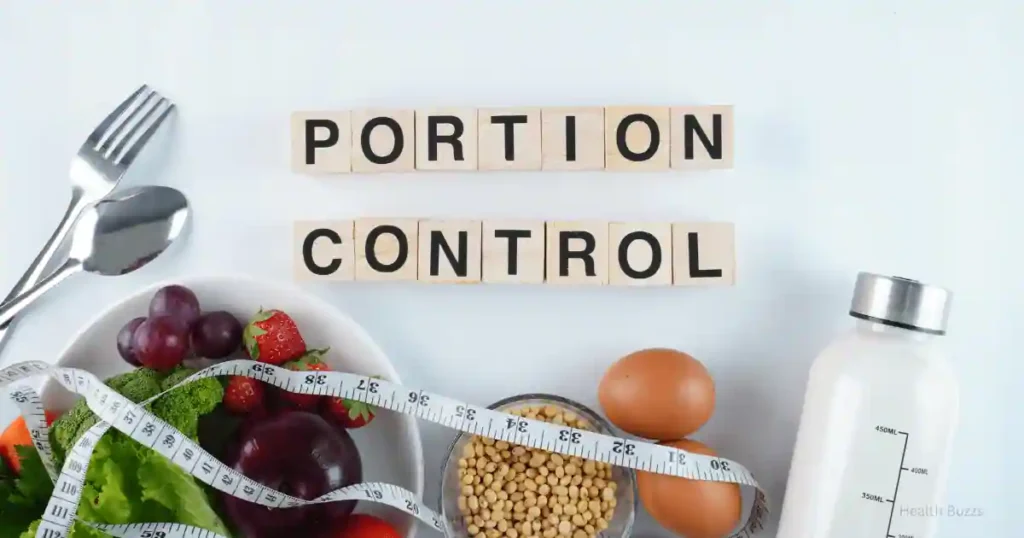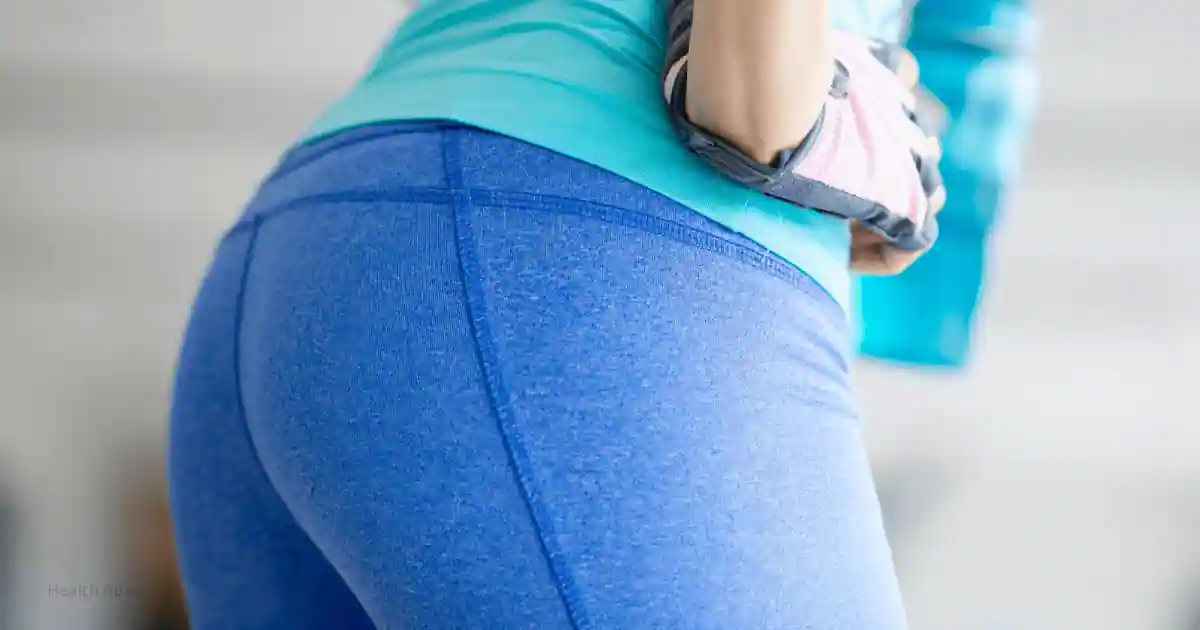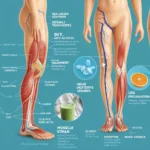If you’re looking to reduce hip fat, you’re not alone. Many people struggle with excess fat in this area, and it can be frustrating to try and get rid of it. The good news is that the right approach can reduce hip fat and achieve a slimmer, more toned appearance.
Are you struggling to fit into your favorite pair of jeans because of stubborn hip fat? Don’t worry; you’re not alone!
Causes of Hip Fat
Hip fat, or subcutaneous fat, accumulates around the hips and thighs, giving the body a pear-shaped appearance. While some amount of fat in this area is average and essential for bodily functions, excess fat can be aesthetically displeasing and harmful to health. Genetics, diet, hormonal imbalances, and lack of physical activity can all contribute to hip fat accumulation.
1. Genetics and Body Type
Some individuals are genetically predisposed to storing fat around their hips and thighs, making it more challenging to lose through diet and exercise alone.
2. Sedentary Lifestyle
Lack of physical activity and prolonged sitting can accumulate fat around the hips and other body areas.
3. Poor Diet
Consuming a diet high in processed foods, sugars, and unhealthy fats can lead to weight gain and increased fat storage around the hips.
4. Hormonal Factors
Hormonal imbalances, such as elevated cortisol levels or insulin resistance, can promote fat deposition around the hips and abdomen.
Health Risks Associated with Excess Hip Fat
Carrying excess weight around the hips can increase your risk of developing various health conditions, including cardiovascular diseases, type 2 diabetes, and joint problems.

How to get rid of hip fat?
Hip fat is a common concern for many individuals, and several effective methods can help eliminate it. Whether you’re looking to enhance your physique or improve your overall health, Here are some strategies you can try to get rid of hip fat with exercise:
1. Regular Exercise
Incorporating cardiovascular exercise into your routine is crucial for losing fat around the hips. Activities like jogging, cycling, swimming, or dancing can help burn calories and strengthen the muscles in the lower body. Aim for at least 150 minutes of moderate-intensity aerobic exercise per week or 75 minutes of vigorous-intensity exercise.
2. Targeted Exercises
In addition to cardiovascular exercise, targeted exercises can specifically target hip fat. Some practical exercises include:
– Squats: Squats work the quadriceps, hamstrings, and glutes, helping to tone and strengthen the hips.
– lunges: Lunges target the lower body muscles, including the hips, thighs, and buttocks.
– Bridges: Bridge exercises strengthen the glutes and hamstrings, which can help reduce hip fat.
– Deadlifts: Deadlifts engage the glutes, hamstrings, and lower back, targeting hip fat.
3. High-Intensity Interval Training (HIIT)
HIIT is an exercise that combines intense bursts of activity with short recovery periods. It is an effective way to burn fat, including hip fat. HIIT exercises include sprinting, jumping jacks, burpees, and circuit training.
4. Strength Training
Strength training plays a crucial role in losing hip fat. When you build muscle mass, your body tends to burn more calories even when you’re not exercising, as muscles require more energy to maintain. Incorporate strength training exercises targeting lower body muscles, such as the glutes, hamstrings, and quadriceps.
5. Incorporate Targeted Hip-Fat Exercises
While cardio and strength training exercises are beneficial for overall fat loss, incorporating targeted hip-fat exercises can help tone and refine the appearance of the hips. Some practical exercises include:
– Side leg lifts: Lie on your side, resting your head on one arm. Lift your top leg as high as possible, squeezing your glutes. Lower the leg and repeat on the other side.
– Hip abductions: Stand with your feet hip-width apart. Lift one leg out to the side, keeping it straight. Slowly lower the leg back down and repeat on the other side.
– Squats: Stand with your feet shoulder-width apart. Slowly lower your body into a squat position, keeping your back straight and your knees behind your toes. Rise back up and repeat.
Remember to consult a healthcare professional before starting any new exercise regimen.
Get rid of hip fat without exercise.
Diet and exercise are often touted as the dynamic duo for weight loss and toning up. However, there are times when physical limitations, busy schedules, or personal preferences mean we’re looking for other ways to meet our health and fitness goals. In the quest for a toned butt, reducing hip fat without breaking a sweat might sound like a pipe dream, but it’s more attainable than you might think.
For many, the hips can be a stubborn area that clings to fat despite diligent workout routines. Whether you’re looking to slim down for aesthetic reasons or to improve your mobility and overall wellness, these seven lifestyle tips can help sculpt your hips and butt without hitting the gym:
7 Lifestyle Tips for a Toned Butt
Hip fat is a common concern for many individuals. While having hips is a natural part of a woman’s body, excess fat in this area can be unflattering and uncomfortable. If you’re looking to reduce hip fat, there are a few strategies you can implement. Here are some 7 tips to reduce hip fat:
Tip 1: Clean Eating

Regarding fat reduction, what you eat can be as important as what you don’t. The concept of ‘clean eating’ promotes the consumption of whole foods while cutting out processed items and excessive sugars. High-fibre, complex, carbohydrate-rich options like quinoa, oats, and sweet potatoes can keep you full and provide sustained energy, all while supporting a healthy metabolic rate.
Another critical aspect of clean eating is the inclusion of lean proteins and healthy fats—foods such as salmon or avocado offer essential muscle development and recovery nutrients. Conversely, foods high in trans fats and added sugars can contribute to weight gain, particularly in problem areas like the hips. Minimizing your intake of these items is crucial in reducing overall and hip-specific fat.
Tip 2: Portion Control

Even with the healthiest foods, too much of a good thing can lead to weight gain. Portion sizes, as many studies have shown, are a significant factor in the obesity epidemic. By being more mindful of the quantity of food you’re consuming, you can effectively reduce calorie intake without drastically changing the makeup of your meals.
Several visual cues and ‘tricks’ aid in portion control. For example, using smaller plates can give the illusion of a fuller portion compared to the same amount on a larger plate. Additionally, dividing your plate into sections for vegetables, proteins, and carbohydrates can help balance your meals and control your calorie intake naturally.
Tip 3: Hydration

Hydration is a key, yet often overlooked, component of a weight management plan. Water is an appetite suppressant and can usually stave off hunger pangs that would otherwise lead to overeating. Furthermore, dehydration can decrease energy levels, hindering your motivation to make healthy food choices or engage in physical activities that support your goals.
Carrying a refillable bottle throughout the day is an easy way to ensure you drink enough water. Aim to drink a glass before each meal and snack, and gradually work toward the recommended daily intake of 8-10 cups. You can also incorporate water-rich foods like cucumbers and melons to boost your hydration levels.
Tip 4: Stress Management
Stress can wreak havoc on your body’s hormonal balance, particularly with cortisol—the “stress hormone” linked to increased fat storage, especially in the abdominal and hip regions. Identifying stressors and working towards managing them can play a significant role in weight management.
Techniques such as meditation, yoga, deep breathing exercises, and regular massages can provide relief by calming the mind and body. Additionally, ensuring a healthy work-life balance, engaging in hobbies you enjoy, and fostering a solid support system can lower stress levels and reduce hip fat.
Tip 5: Quality Sleep

The link between inadequate sleep and weight gain is well-established. Poor sleep can disrupt hormone levels, making you feel hungrier and less satisfied after eating. It often leads to an increased caloric intake and a greater preference for foods high in sugar and fat.
The aim is to establish a consistent sleep schedule for 7-9 hours of rest each night. Prioritize sleep hygiene by creating a comfortable environment that is free of distractions and ensures a good night’s sleep. Use blackout curtains and white noise machines, and turn off electronic devices well before bedtime
Tip 6: Active Lifestyle
While traditional workouts may not be on the agenda, numerous ways to maintain an active lifestyle can contribute to hip fat reduction. Taking the stairs instead of the elevator, walking or cycling for short errands, or even engaging in hobbies like gardening or dancing can provide the necessary daily activity to support your goals.
It’s also important to note that high-intensity interval training (HIIT) and steady-state cardio effectively reduce fat, especially in high-intensity activities that continue to burn calories post-exercise.
Tip 7: Mindful Eating
Mindful eating is paying full attention to the eating experience by engaging all the senses without judgment. This technique encourages a healthier relationship with food, reduces overeating, and helps you distinguish between true hunger and eating triggered by emotions or external cues.
To eat mindfully, remove distractions like television and cell phones, chew slowly to appreciate the texture and flavor of your food, and listen to your body’s hunger and fullness signals. Putting your fork down between bites and taking deep breaths can also help slow your pace and allow you to register satiety.
Also Read- 10 Health Benefits of Eating Coconut
Conclusion
Implementing these 7 lifestyle tips doesn’t just offer the promise of a toned butt—they’re also pathways to better overall health and wellness. Each change represents a sustainable adjustment to your daily habits, habits that can drive weight management and long-term success. While patience is a crucial ingredient in the journey to a slimmer hip area, the cumulative impact of these alterations can lead to lasting results that may surprise even the most ardent gym enthusiast.
Though slimming down without a dedicated workout routine may seem daunting at first glance, the key lies in consistency and commitment to a balanced lifestyle. By following these tips and incorporating them into your everyday routine, you’re reducing hip fat and creating a healthier and more harmonious relationship with your body and the food you consume.
The journey to a toned butt is personal, but it is often those small lifestyle changes that yield the most significant transformations. Give yourself the gift of time and see the effects of these tips as they intertwine into the fabric of your existence. Reducing hip fat is not an isolated goal but a testament to your holistic commitment to health and well-being.
FAQs- How to Reduce Hip Fat
Ans: While spot reduction is not possible, combining cardiovascular exercises, strength training, and a healthy diet can help you lose overall body fat, including around the hips.
Ans: Spot reduction exercises may help tone and strengthen the muscles in specific areas but cannot selectively reduce fat in those areas. It’s essential to focus on overall fat loss through a combination of diet and exercise.
Ans: While no specific food can target hip fat, incorporating a balanced diet rich in fruits, vegetables, lean proteins, and healthy fats can support weight loss and overall health.
Ans: The timeline for seeing results in reducing hip fat varies depending on factors such as diet, exercise routine, genetics, and starting weight. Consistency is key, and it may take several weeks to months to notice significant changes.
Ans: While it’s challenging to eliminate fat in specific areas, adopting a healthy lifestyle can help reduce overall body fat, including around the hips, leading to a slimmer and more toned appearance.
Hi there! I’m content writer and blogger. With over two years of experience, I’ve shared my passion for writing across various platforms. I firmly believe in the transformative power of words and look forward to sharing this journey with you. Enjoy my work!










